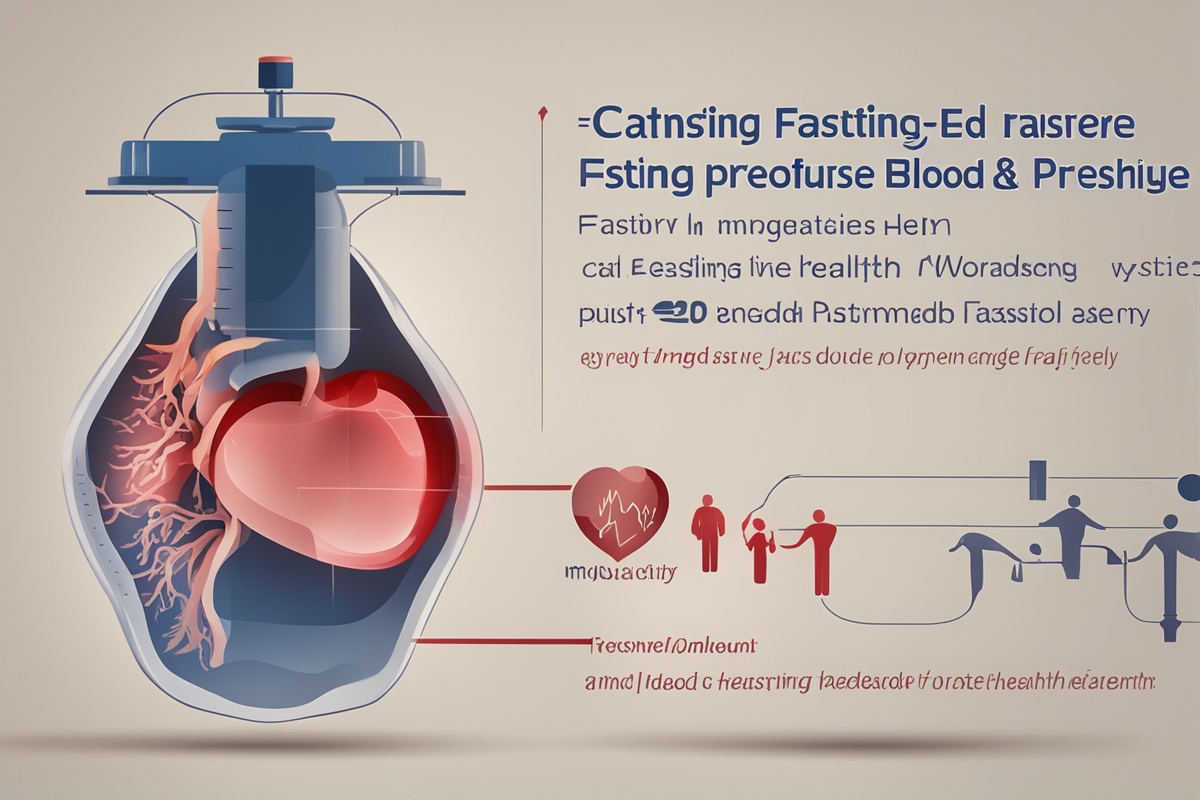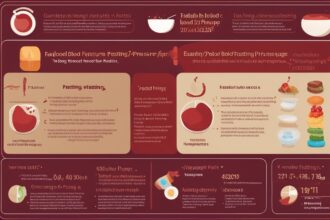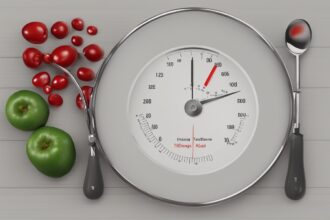Hey there, health enthusiasts! If you’re curious about how fasting can transform your wellness journey, you’re in for a treat. Today, we’re diving deep into the fascinating connection between fasting and blood pressure. With heart disease being a leading cause of mortality worldwide, finding natural ways to manage blood pressure is more important than ever. Fasting, a practice rooted in ancient traditions, has gained modern attention for its potential health perks. Among the many fasting benefits, its impact on cardiovascular health stands out. So, let’s explore how skipping a few meals might just be the key to a healthier heart, backed by science and sprinkled with practical tips you can start using today.
What Is Fasting, and Why Does It Matter for Health?
Fasting isn’t just about skipping food; it’s a deliberate practice of abstaining from eating for a specific period. From intermittent fasting (IF) to prolonged fasts, there are various styles tailored to different goals. Intermittent fasting, for instance, often involves cycles of eating and fasting, like the popular 16:8 method where you fast for 16 hours and eat during an 8-hour window. But beyond weight loss, fasting benefits extend to metabolic health, inflammation reduction, and—yes—blood pressure regulation. Research suggests that fasting triggers a cascade of physiological changes, such as improved insulin sensitivity and reduced oxidative stress, which can positively influence cardiovascular markers (Mattson & Wan, 2005). So, how does this ancient practice tie into something as critical as blood pressure? Let’s break it down.
The Science Behind Fasting and Blood Pressure
Blood pressure, the force of blood against your artery walls, is a key indicator of heart health. High blood pressure (hypertension) can strain your heart and lead to serious issues like stroke or heart attack. Here’s where fasting comes into play. Studies have shown that fasting can lower blood pressure by reducing body weight, improving vascular function, and decreasing stress hormones like cortisol. A 2018 study found that intermittent fasting significantly reduced systolic and diastolic blood pressure in participants over a few weeks (Wilkinson et al., 2018). This is likely due to fasting’s effect on the autonomic nervous system, which regulates heart rate and blood vessel tone. Additionally, fasting promotes ketosis—a state where your body burns fat for fuel—which may further ease cardiovascular strain (Paoli et al., 2019). These fasting benefits for hypertension are promising, but it’s not a one-size-fits-all solution. Let’s explore the mechanisms in more detail.
How Fasting Impacts Cardiovascular Risk Factors
Fasting doesn’t just target blood pressure in isolation; it addresses multiple risk factors tied to heart health. For starters, fasting often leads to weight loss, and even a modest reduction in body weight can lower blood pressure significantly (Hall et al., 2015). It also improves lipid profiles by reducing triglycerides and LDL cholesterol while boosting HDL (the “good” cholesterol). Moreover, fasting reduces inflammation—a major driver of hypertension—by lowering levels of pro-inflammatory markers like C-reactive protein (Faris et al., 2012). Another perk? Fasting enhances insulin sensitivity, which helps manage blood sugar levels and prevents blood vessel damage. When you combine these intermittent fasting advantages, it’s clear why fasting is gaining traction as a heart-friendly lifestyle choice. But what does this mean for your day-to-day life? Let’s look at some practical ways to harness these benefits.
Practical Tips to Start Fasting for Blood Pressure Management
If you’re new to fasting or looking to optimize its effects on blood pressure, starting slow and staying informed is key. Fasting isn’t about starvation; it’s about strategic timing. Here are some actionable tips to help you reap the health benefits of fasting while keeping safety in mind:
- Start with Intermittent fasting: Begin with a simple 12:12 schedule (12 hours fasting, 12 hours eating) before progressing to 16:8. This gradual approach helps your body adjust.
- Stay Hydrated: Drink plenty of water during fasting windows to support circulation and prevent dehydration, which can temporarily spike blood pressure.
- Monitor Your Numbers: Use a home blood pressure monitor to track changes and consult your doctor if you notice unusual fluctuations.
- Focus on Nutrient-Dense Meals: Break your fast with balanced meals rich in potassium (like bananas and spinach) to support healthy blood pressure levels.
- Avoid Overeating: Bingeing after a fast can negate benefits, so practice portion control during eating windows.
Remember, consistency matters more than perfection. Pairing fasting with other healthy habits, like regular exercise, can amplify its cardiovascular effects. But fasting isn’t without risks, especially for certain groups. Let’s talk about who should approach it with caution.
Potential Risks and Who Should Avoid Fasting
While the fasting benefits for heart health are exciting, it’s not a universal fix. Fasting can pose risks for people with certain medical conditions or lifestyles. For instance, individuals with low blood pressure (hypotension) might experience dizziness or fatigue during fasting. Those on blood pressure medications should be cautious, as fasting can alter how these drugs work, potentially leading to dangerously low levels (Goldhamer et al., 2002). Pregnant women, children, and people with eating disorders should also avoid fasting unless under strict medical supervision. Here are a few red flags to watch for:
- Severe Fatigue or Dizziness: This could signal dehydration or low blood sugar, so break your fast if symptoms persist.
- Irregular Heartbeat: If you feel palpitations, stop fasting and seek medical advice immediately.
- Medication Interactions: Always consult your healthcare provider if you’re on meds for hypertension or other conditions.
The key takeaway? Personalize your fasting plan. Work with a doctor or nutritionist to ensure it aligns with your health needs. Fasting benefits are real, but safety always comes first.
Long-Term Fasting Benefits for Cardiovascular Wellness
Looking beyond short-term effects, fasting could be a sustainable tool for long-term heart health. Research indicates that regular fasting may reduce the risk of developing hypertension over time by improving endothelial function—the health of blood vessel linings (Malinowski et al., 2019). It also supports autophagy, a cellular cleanup process that removes damaged components and may protect against arterial stiffness. Imagine fasting as a reset button for your body, clearing out metabolic clutter and paving the way for better blood flow. Of course, fasting alone isn’t a magic bullet. Combining it with stress management, adequate sleep, and a heart-healthy diet maximizes the fasting benefits for blood pressure. So, think of fasting as part of a bigger wellness toolkit, not the only tool in the box.
As we wrap up, let’s reflect on what we’ve learned. Fasting offers a promising avenue for managing blood pressure and boosting overall cardiovascular health. From lowering inflammation to supporting weight loss, the fasting benefits are backed by growing scientific evidence. But it’s not a quick fix or a standalone solution. It works best when paired with mindful eating, regular check-ins with your healthcare provider, and a balanced lifestyle. Whether you’re a fasting newbie or a seasoned pro, remember to listen to your body and prioritize safety. Have you tried fasting to improve your heart health? Drop a comment below—I’d love to hear your story! And if you’re ready to take the plunge, start small, stay hydrated, and watch how this age-old practice might just transform your wellness game.
References
- Faris, M. A., Kacimi, S., Al-Kurd, R. A., Fararjeh, M. A., Bustanji, Y. K., Mohammad, M. K., & Salem, M. L. (2012). Intermittent fasting during Ramadan attenuates proinflammatory cytokines and immune cells in healthy subjects. Nutrition Research, 32(12), 947-955.
- Goldhamer, A. C., Lisle, D. J., Sultana, P., Anderson, S. V., Parpia, B., Hughes, B., & Campbell, T. C. (2002). Medically supervised water-only fasting in the treatment of borderline hypertension. Journal of Alternative and Complementary Medicine, 8(5), 643-650.
- Hall, K. D., Bemis, T., Brychta, R., Chen, K. Y., Courville, A., Crayner, E. J., … & Yanovski, S. Z. (2015). Calorie for calorie, dietary fat restriction results in more body fat loss than carbohydrate restriction in people with obesity. Cell Metabolism, 22(3), 427-436.
- Malinowski, B., Zalewska, K., Węsierska, A., Sokołowska, M. M., Socha, M. W., Liczner, G., … & Wiciński, M. (2019). Intermittent fasting in cardiovascular disorders—an overview. Nutrients, 11(3), 673.
- Mattson, M. P., & Wan, R. (2005). Beneficial effects of intermittent fasting and caloric restriction on the cardiovascular and cerebrovascular systems. Journal of Nutritional Biochemistry, 16(3), 129-137.
- Wilkinson, M. J., Manoogian, E. N., Zadourian, A., Lo, H., Fakhouri, S., Shoghi, A., … & Panda, S. (2018). Ten-hour time-restricted eating reduces weight, blood pressure, and atherogenic lipids in patients with metabolic syndrome. Cell Metabolism, 31(1), 92-104.






